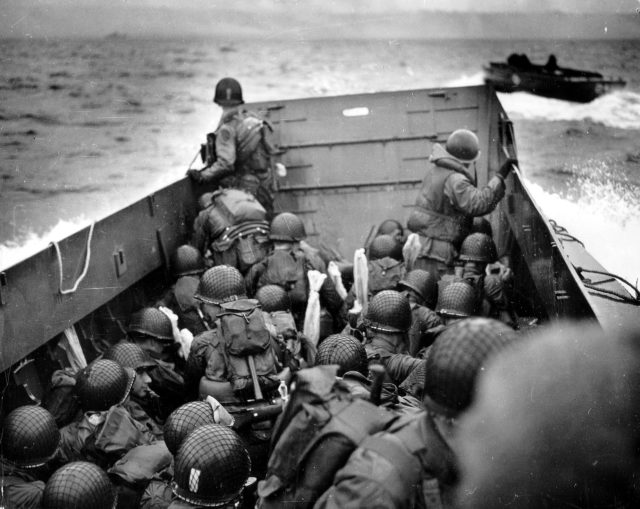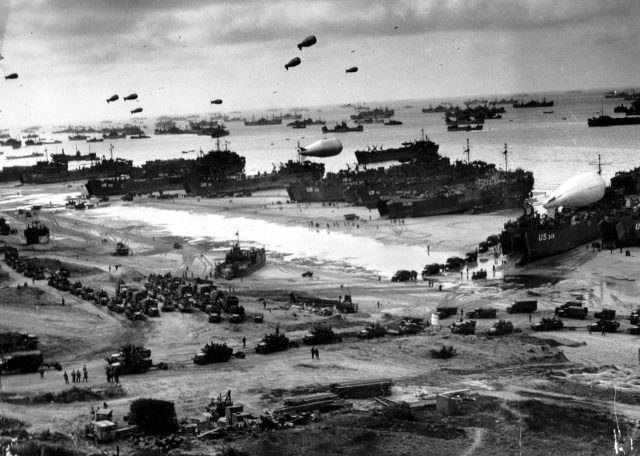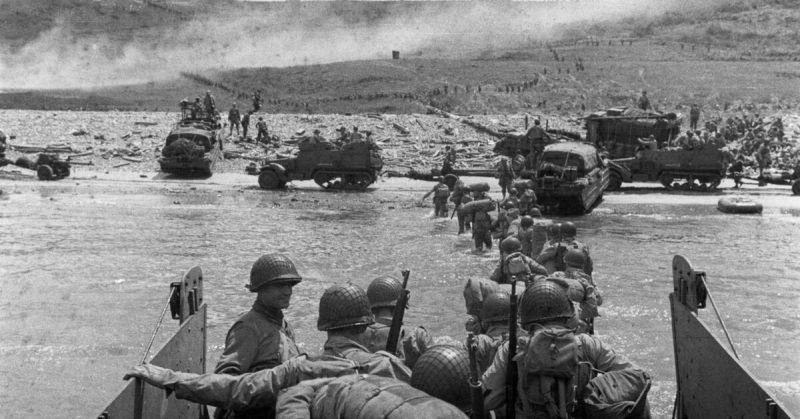The largest amphibious landing in history took place in 1944, on the 6th of June. Since war broke out in 1939, German forces had dominated most of Western and Central Europe, in a seemingly unstoppable course of aggressive expansion.
Initially, America had stayed detached from the conflict. During the First World War, they had worked alongside the British Empire and the other Allied forces to defeat the armies of Kaiser Wilhelm II. Of course, that was more than two decades before Hitler instigated a new and even more deadly war in Europe, and this time the United States was a little more hesitant to join the fray.
After Pearl Harbor, however, everything changed. Japan – an ally of Germany and a member of the Axis powers – had launched an unprecedented attack on American soil. As a direct result of this, the only course for the United States was to enter the war on the side of the Allies.
A year before the attack on Pearl Harbor, hundreds of thousands of British and French troops were rescued from advancing German forces during the Dunkirk evacuation. As Hitler’s soldiers swept across Europe, the Allied armies found themselves trapped on the northern coastline of France, and having eventually escaped, it looked as though they would not be returning to the continental mainland for some time.
Hitler then decided to turn his attention to Russia, and launched a full-scale invasion as part of Operation Barbarossa. Although Russia was taken by surprise, expecting as they did that Germany would finish dealing with Britain before it marched eastwards, they were still more than capable of repelling such an offensive.
All the same, they began putting more and more pressure on Britain and America to attack their common enemy and establish a Western front. Eventually, the Allies complied, and plans were made for a truly momentous return to Europe.

Four years after the evacuation at Dunkirk, they tried to turn the tide of the long-running conflict once and for all. A huge number of Allied troops landed in Normandy, in the north of France, determined to fight back and re-establish a Western Front against Germany.
Operation Neptune, as the mission was known, would come to be remembered as the start of France’s liberation and, ultimately, the beginning of the end for Nazi regime. However, the initial landings were far from easy.
Storming the beaches came at a heavy price for the Allies, especially on the infamous Omaha Beach. The invasion was focused across a number of sectors – Utah, Gold, Juno, Sword and Omaha – and nowhere was the fighting more intense than the latter of these five.
Taking Omaha Beach was an essential part of the invaders’ strategy, as it would link the troops at Gold with the forces landing at Utah, securing the coastline. American troops were tasked with this mission, backed up by Allied naval bombardments, but they faced a number of difficulties before they even reached the shore.

High winds and navigational issues resulted in many of the US landing crafts arriving in the wrong places along the beach. This added to the chaos as the first wave of troops was met with unexpectedly resilient German defenses. Beach obstacles – barbed wire, sharpened stakes, and metal tripods – slowed progress across the sand, while heavily fortified machine gun positions reigned bullets down on them.
Eventually, the small units of US soldiers that did manage to get further were able to stage their own improvised assaults on the German gunners. This allowed more waves of troops to secure the area but, tragically, roughly 2000 Allied soldiers died to take Omaha beach.
Now, 73 years later, the beach is a tranquil and beautiful place, as this striking video shows. The footage itself is an elegant drone shot, but when we remember the events that took place there in 1944, it becomes even more poignant.
